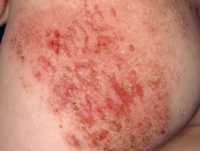MedicalResearch.com Interview with:
Pei Wang, PhD
Professor, Department of Genetics and Genomic Sciences
Icahn School of Medicine at Mount Sinai, New York, NY 10029, USA
Michael J. Birrer MD PhD
Director, Winthrop P. Rockefeller Cancer Institute
University of Arkansas for Medical Sciences
Little Rock, AR 72205
Amanda G. Paulovich MD PhD
Translational Science and Therapeutics Division
Fred Hutchinson Cancer Center
Seattle WA 98109
MedicalResearch.com: What is the background for this study? How common is serous ovarian cancer?
Response: Epithelial ovarian cancer accounts for >185,000 deaths/year worldwide. The most common subtype, high-grade serous ovarian cancer (HGSOC), accounts for 60% of deaths. Despite improvements in surgical and chemotherapeutic approaches, HGSOC mortality has not changed in decades. Five-year survival remains ~30% for the majority of patients.
Standard of care involves surgical debulking combined with adjuvant or neoadjuvant chemotherapy with carbo- or cisplatin in combination with a taxane. At diagnosis, HGSOC is among the most chemo-sensitive of all epithelial malignancies, with initial response rates of ~85%, presumably related to DNA repair defects. Platinum is thought primarily to drive the response rate, due to the lower single-agent response rate for taxanes.
Unfortunately, 10-20% of HGSOC patients have treatment-refractory disease at diagnosis, fail to respond to initial chemotherapy, and have a dismal prognosis. The poor response to subsequent therapy and median overall survival of ~12 months for these patients has not changed in 40 years.
Despite >30 years of literature studying platinum resistance in cancer, there currently is no way to distinguish refractory from sensitive HGSOCs prior to therapy. Consequently, patients with refractory disease experience the toxicity of platinum-based chemotherapy without benefit. Due to their rapid progression, they are commonly excluded from participating in clinical trials. Consequently, there is no ongoing clinical research that could identify effective therapeutic agents for these patients or provide insights into molecular mechanisms of refractory disease. “Right now, we can’t identify drug-resistant ovarian cancer patients up front,” said co-senior author
Michael Birrer, MD, PhD, who directs UAMS’ Winthrop J. Rockefeller Cancer Institute. “We find them by default: They get sick and pass away so quickly that they can’t even be put on new clinical trials.”
To address this unmet clinical need, we performed proteogenomic analysis of treatment-naïve HGSOCs (chemo-sensitive and chemo-refractory) to identify molecular signatures of refractory HGSOC and to identify potential treatment targets.
(more…)






























